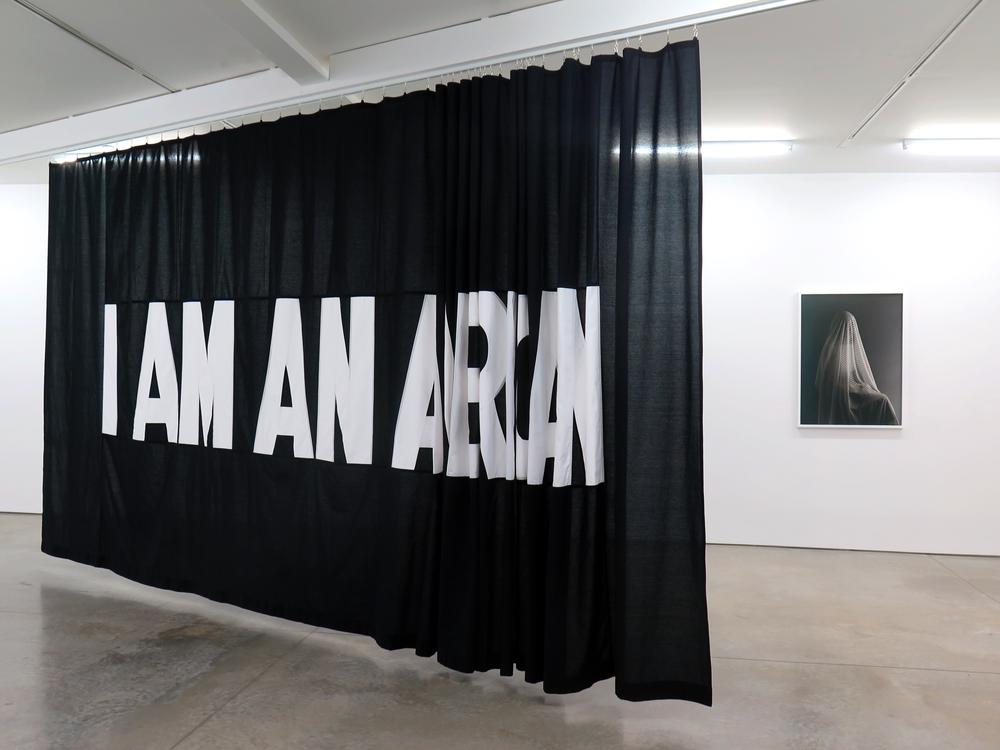Stephanie Syjuco. Protests: Politics and Aesthetics

On December 8, 1941, a Japanese American shop owner hung a large sign reading “I am an American” on his store window at Eighth and Franklin Streets in the Japantown neighborhood of Oakland, California. The store was forced to close as the owner and his family were ordered into concentration camps by the United States government. In March of the following year, Dorothea Lange (1895–1965) photographed the still hanging sign while working on a documentation assignment for the War Relocation Authority.1 The sign’s powerful statement on citizenship, immigration, and identity resonates today and appears in Stephanie Syjuco’s twenty-foot handmade banner I am an . . . (2017), which hangs on a moveable track so that when partially closed the word “American” is distorted. Syjuco often looks to historical protest objects—from signs and banners made by the suffragettes to the NAMES Project AIDS Memorial Quilt (1985)—to examine the power of aesthetics to shape a movement. Since 2016 Syjuco has been making her own sewn banners and lends them out for use in protests. She leads banner-making workshops and disseminates her designed templates globally via a publicly accessible Google Doc—“as I’ve looked at images of protests throughout the world, I’ve seen my designs tailored and used,” said the artist, adamant that images and objects can produce social and political change.2
Dorothea Lange, Oakland, Calif., Mar. 1942. A large sign reading “I am an American” placed in the window of a store, at 401 - 403 Eighth and Franklin streets, on December 8, the day after Pearl Harbor. The store was closed following orders to persons of Japanese descent to evacuate from certain West Coast areas. The owner, a University of California graduate, will be housed with hundreds of evacuees in War Relocation Authority centers for the duration of the war, 1942. Library of Congress Prints and Photographs Division Washington, DC, available atloc.gov/pictures/item/2004665381/. ↩︎
Stephanie Syjuco, “Art / Politics / Aesthetics,” lecture at the Berkeley Art Museum and Pacific Film Archive, California, April 5, 2017 (posted May 10, 2017), video, 1:08 hours, available at youtu.be/JqGxkJoZMGY. ↩︎